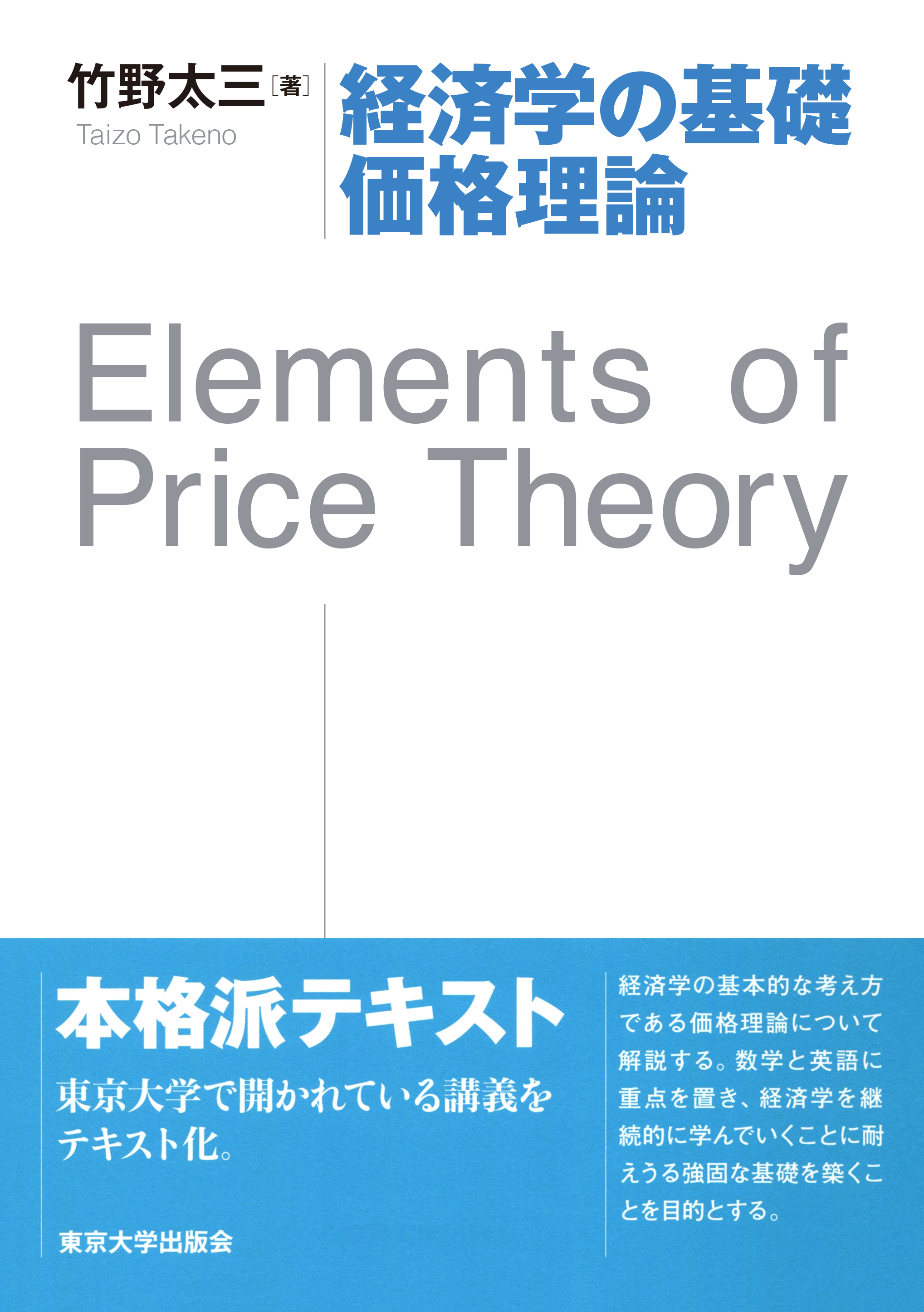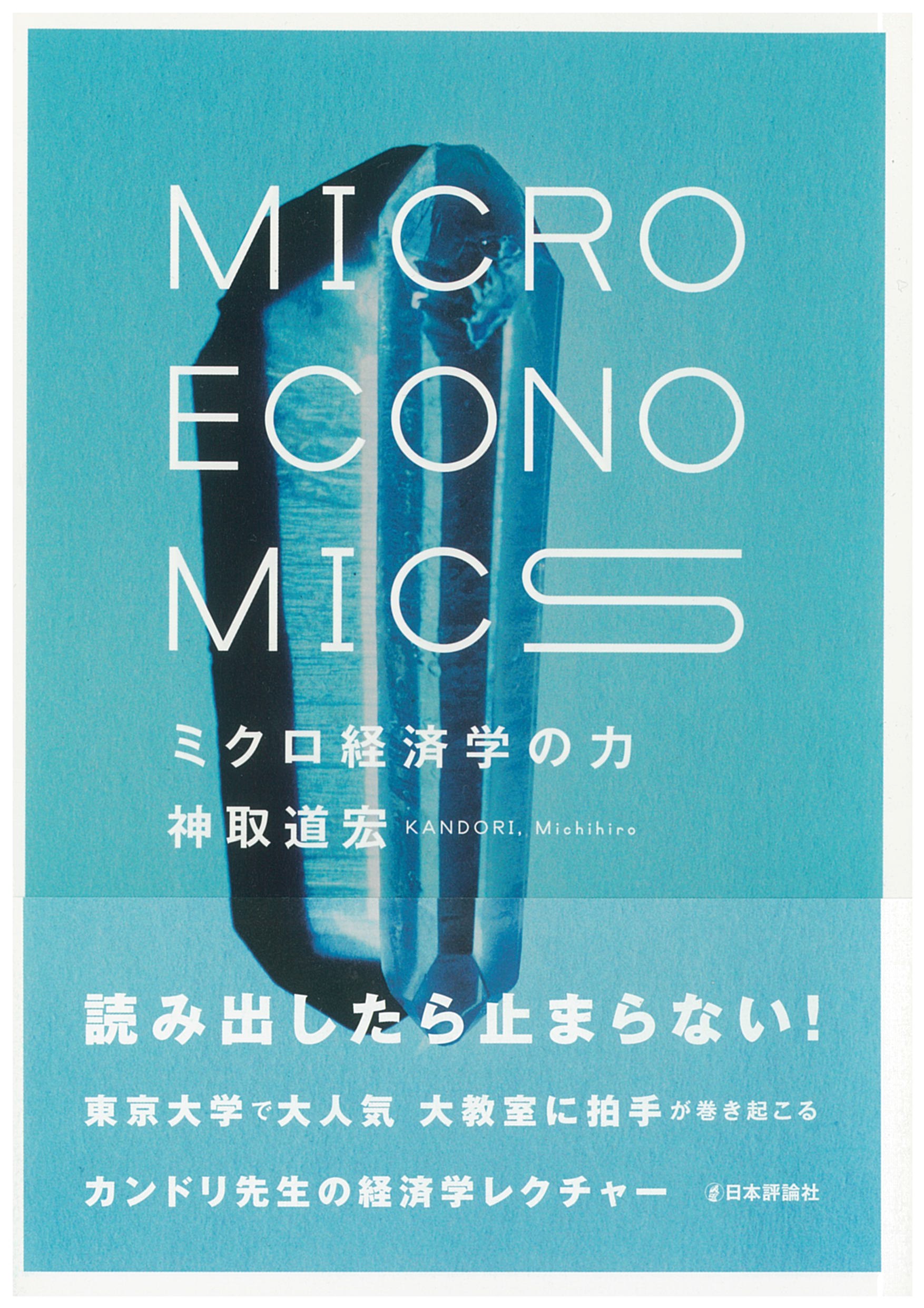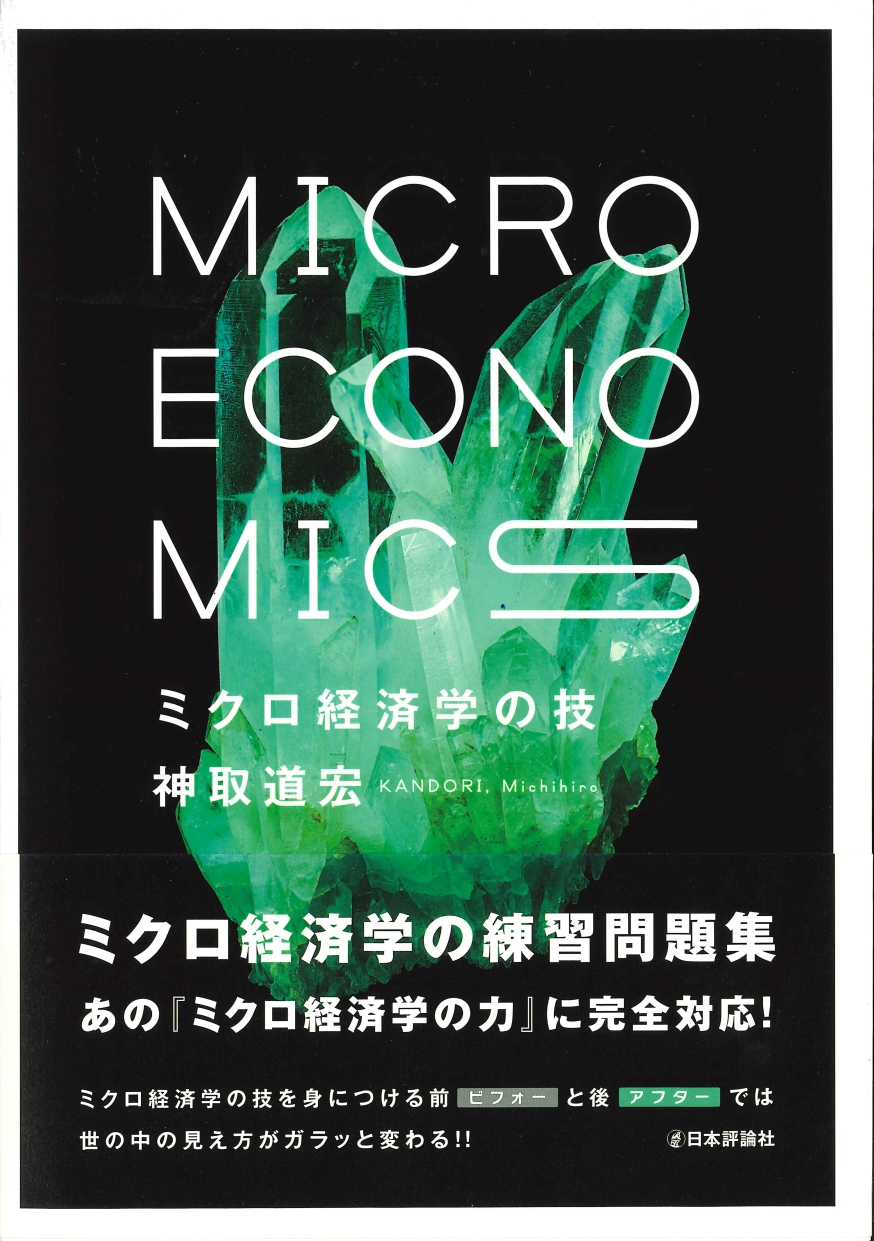
Title
Keizaigakuno Kiso Kakaku Riron (Foundations of Economics: Price Theory - Elements of Price Theory)
Size
324 pages, A5 format
Language
Japanese
Released
September 28, 2017
ISBN
978-4-13-042146-1
Published by
University of Tokyo Press
Book Info
See Book Availability at Library
Japanese Page
Economics is often regarded as a study of constrained optimization problems: utility maximization, expenditure minimization, and so on. Writing a textbook on economics is also a constrained optimization problem; authors are constrained by the number of pages typically deemed standard by publishers, perhaps deduced from the breakeven retail price. This constraint is so stringent that it makes many textbooks on the same subject, such as microeconomics, appear very similar to one another. If the number of pages is more or less the same and the number of topics typically covered is more or less the same, then the number of pages the authors can allocate to each topic would be more or less the same. It is as if the constraint is so stringent that the set of optimal and feasible solutions to this problem is a singleton! What then is the point of writing another textbook?
This book is a textbook for undergraduate students on price theory, rather than microeconomics. Price theory, together with game theory, is usually covered in textbooks on microeconomics. By excluding game theory, this book allocates more space to explain concepts in price theory in much greater detail than would be possible in textbooks on microeconomics. Obviously, students will have to consult a textbook on game theory to learn the subject, but doing so will allow them to learn game theory in greater detail than would be possible by consulting a textbook on microeconomics, albeit at a cost of possibly purchasing two books instead of one. Clearly, this option isn't for every student, but to those students who wish to pursue graduate studies in economics, this option may well be worth the extra cost.
First and foremost, this book offers detailed answers to questions that undergraduate students often encounter, but would not find in most textbooks on microeconomics intended for them. For instance, why do we use utility functions when we, as consumers, never really use them? For students studying economics for the first time, this is a very natural question, but a very difficult one to provide a compelling answer to in a few paragraphs. This book dedicates a section of several pages to answer this very question, and it does the same for other natural questions that are difficult to answer with limited space. More specifically, the book utilizes ample space to derive all key equations without skipping lines, so that students will be able to follow the calculations. The book also offers careful interpretations of the derived equations. Second, the book covers in detail the theory of core, which is essential in understanding the essence of general equilibrium theory and how Adam Smith's "invisible hand" works, if and when it works. Oftentimes, this subject is only lightly touched upon in other textbooks for undergraduate students. Third, in order to support students’ understanding of the mathematical technique used in the book, a comprehensive mathematical appendix is provided and is available from the author’s website. The book indicates mathematical concepts that are explained in the appendix for the readers’ convenience.
(Written by TAKENO Taizo, Professor, Graduate School of Arts and Sciences / 2019)



 Find a book
Find a book



